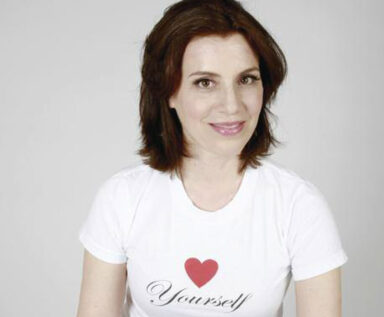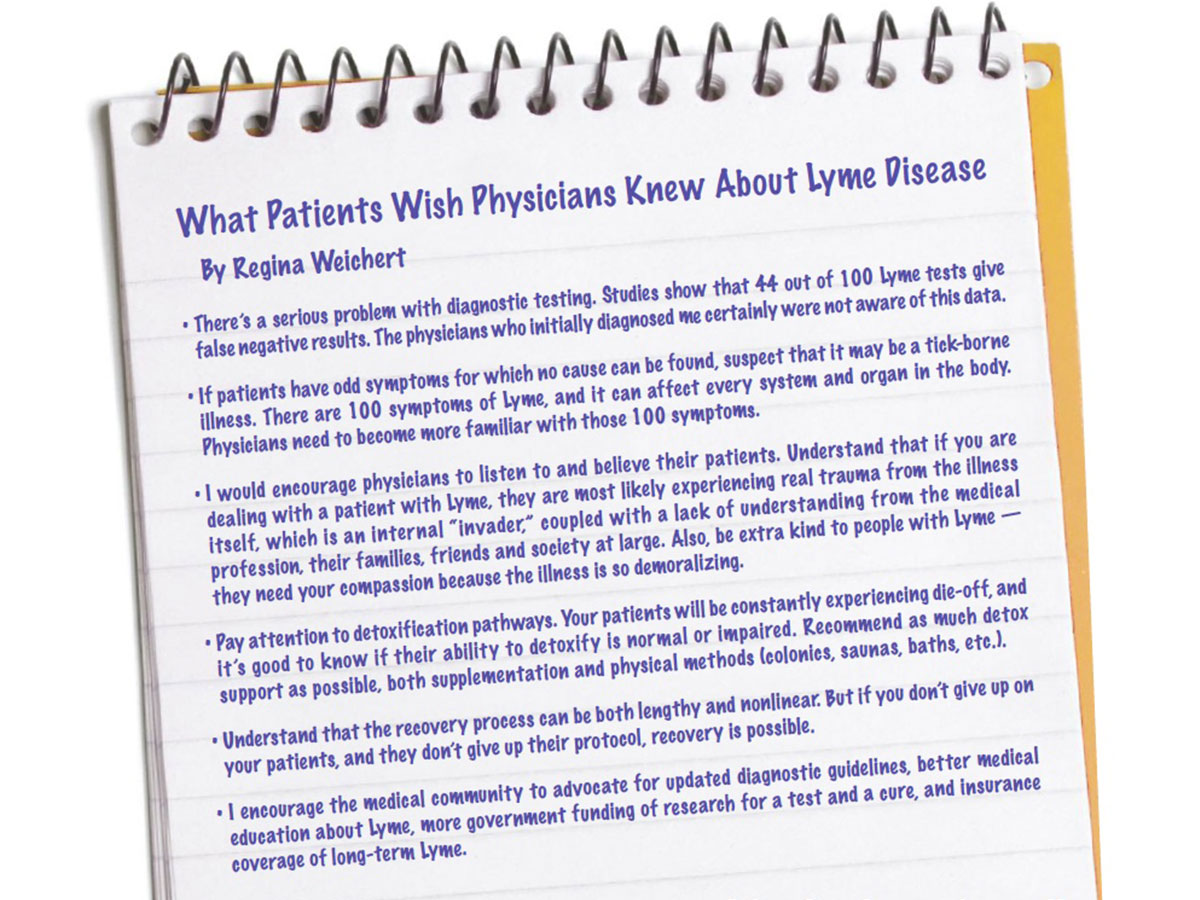Lyme Disease: A Patient’s Perspective
- By Trudie Mitschang

AT 50, Regina Weichert is a graduate student at New York University’s Heyman Center of Fundraising and Philanthropy, working toward an MS in fund-raising and grant-making. Her journey with Lyme disease began in 2004, when an afternoon walk on Martha’s Vineyard led to a tick bite that changed the course of her life. “My guess is a tick latched on after a walk through dune grass one day. Chilmark, the town where I lived, is a Lyme epicenter. They have documented that 40 percent of the population has had Lyme, but given the fact that about 50 percent of blood tests are inaccurate, the real number is probably much higher than that.”
Weichert never found the tick or developed the telltale “bull’s-eye” rash characteristic of Lyme disease, instead experiencing fatigue and unusual headaches. A few days later, a 103-degree Fahrenheit fever sent her to the ER, where it was confirmed she had a tick-borne illness. A10-day course of doxycycline failed to relieve her symptoms, and follow-up Western blot and ELISA testing returned positive for Borrelia burgdorferi, the bacterial agent of Lyme disease.
Frightened, Weichert sought help from an infectious disease specialist at Brigham and Women’s Hospital in Boston. At the time, she was still on high-dose doxycycline (400 mg twice a day), and she was advised to stay on it as long as possible. “After several months of doxy, I felt something recede
within me, and thought I was better,” she says. “My doctors redid the blood tests and said the Borrelia levels now indicated that my infection was gone.”
Unfortunately, her battle with Lyme was far from over. Six months later, Weichert experienced new and troubling symptoms, including kidney aches, intense fatigue and abdominal swelling and pain. She consulted with at least half a dozen doctors, and she was repeatedly misdiagnosed with stress or depression. Then, five years after her original diagnosis, Weichert heard about an alternative practitioner in Manhattan who used the French ACMOS testing method to diagnose various disease states. After undergoing a series of treatments, including IVs, UVB and neural therapy, Weichert remained ill, and she began an online search for other alternative Lyme disease treatments. That search led her to Dietrich Klinghardt, MD, PhD, medical director of the Klinghardt Academy. Intrigued by his unique treatment protocol and his successful track record treating Lyme disease patients, she scheduled an appointment.
“Meeting Dr. Klinghardt was lifechanging,” she says. “He used the kinesiology Autonomic Response Testing to assess me and various labs to diagnose me. I had several chronic infections: one in my jawbone from an old wisdom tooth extraction; chronic strep; parasites; and high levels of mercury toxicity. He did not test me for Lyme right away because my immune system was so low. Later on, we ran blood tests, and I tested positive for both Lyme and Babesia.”
Weichert’s treatment regimen included natural therapies interspersed with pharmaceutical drugs such as antiparasitics. The recovery period was difficult, and she says it was well over a year before she sensed real improvement. “In 2008, I was so sick I could barely walk a block,” says Weichert. “I had a lot of pain, cognitive impairment and fatigue. I couldn’t hold a job. By 2012, I was well enough to begin a graduate program, and I will graduate in 2014. I am beginning a job hunt this summer, and recent lab work showed my white blood cell count was in the normal range for the first time in about 15 years! My immune markers are substantially up, and my inflammation level is way down — my body has been healing, cell by cell.”
Weichert credits Dr. Klinghardt with saving her life and is thankful for his “out-of-the-box” treatment approach, compassion and humor. “He’s not frightened of the illness, and he doesn’t give up, but rather meets patients as the individuals that they are. His style as a doctor is to teach — he teaches people how to be healthy, and provides a new way of looking at and living life. It’s a blessing to be his patient.”
